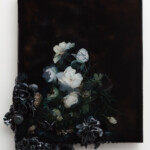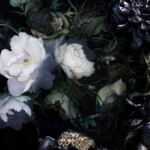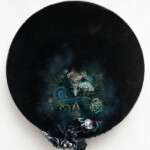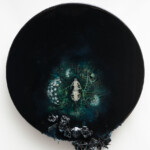






SCOPE Miami Beach 2016
Booth C13
“The beautiful floral combinations rendered in sixteenth century Dutch Still Life paintings were both scientific studies (collected from “exotic” regions of the world during exploratory expeditions) as well as status symbols of the powerful and affluent. A specific genre of these still life paintings was that of the Vanitas, which contained symbols of death or change as a reminder that all living things succumb to their own mortality. This theme continually inspired introspection for generations. In fact, Sigmund Freud used the human response to transience as the foundation for groundbreaking psychological findings on mourning and melancholia. These works are a paradoxical take on the vanitas. They contain both manmade and natural objects, held in material that would not let either of them decay. Plastic is the defining material of our time.” – Regan Rosburg
ABOUT REGAN ROSBURG:
Regan Rosburg is an artist and naturalist living in Denver, Colorado. She received her BFA from University of Colorado (Boulder), and an MFA from Lesley University (Cambridge, MA). She currently teaches at CU Boulder and Metro State University. With a continuously sharp focus on the concept of biophelia, her most recent work also investigates the concepts of environmental melancholia and what she calls “collective social mania.” Rosburg is plastic-pollution activist. To better understand the health of different ecosystems, she routinely takes biology-based research trips to locations around the globe. Her commitment to environmental causes is evident in her artistic imagery, talks, travels, and writing. She has been included in many national exhibitions on environmental issues, has received awards and honors, and is currently a part-organizer of an international climate-change conference that will take place in Canada, 2017. Rosburg’s resin work contains precious plant and animal relics, bones, insects, lace and painted imagery. These objects are suspended in incredibly laborious, three dimensional resin “paintings.” The use of resin poignantly addresses her deep concern over ubiquitous plastic pollution in the environment, while presenting the beauty of plant and animal species. Due to the labor intensive and complicated process involved in making the resin works, she usually only produces small bodies of work over the course of a couple years.






